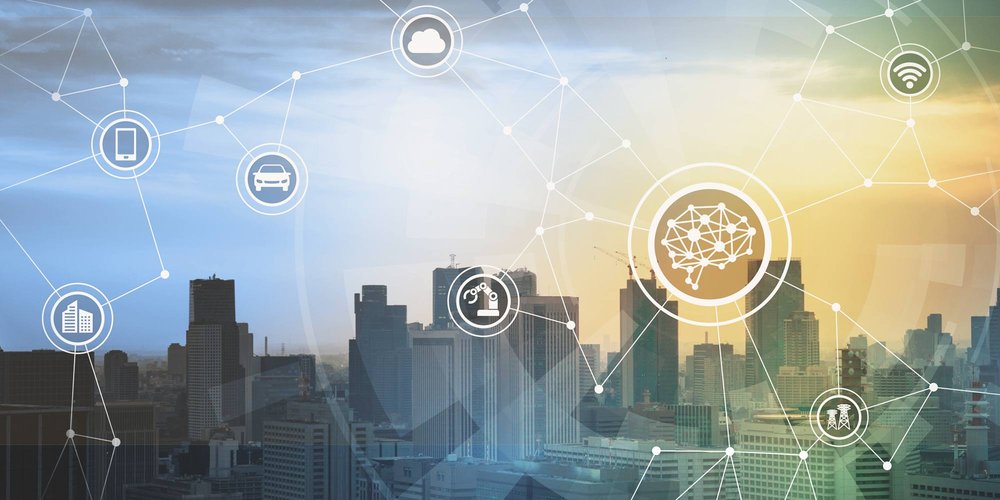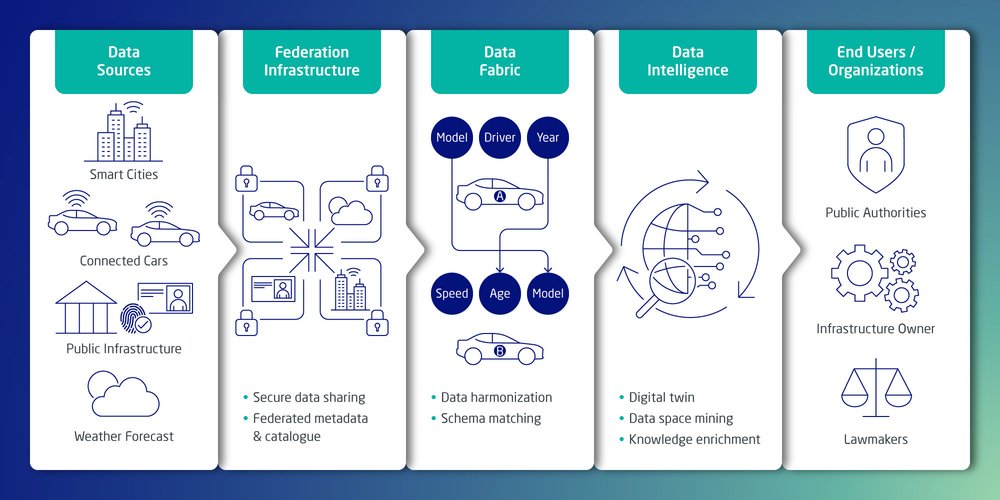
The Data Ecosystem and Standards (DES) group researches the use of networked data and develops new methods to improve data architectures and frameworks. Our work enables data ecosystems to manage the collection and distribution of information more efficiently.
DES members work with leading organizations such as the FIWARE Foundation and the Innovative Optical and Wireless Network (IOWN) Global Forum to help set European technology standards and ensure that NEC technology complies with the latest industry standards and inter-governmental European Union requirements.
Our focus areas include smart services and Internet of Things (IoT) networks, data spaces and digital twins.
Federated Data Systems: Innovation and Trust
At NEC Laboratories Europe, we improve federated data systems by introducing new ways for multiple domains to share their data while maintaining full control over it. We strive to achieve optimal balance between the innovation needed to combine different data ecosystems and the data security measures required to manage sensitive data confidentially. Using our data ecosystem technologies, information owners can define specific limitations on how data within their data ecosystems is used – without limiting scalability or system performance. We define a data ecosystem as any computing component that stores or transmits data or information.

Figure: Federated data systems: NEC technology improving collection, management, and distribution of information
Data Sources: Heterogenous data comes from different domains and stakeholders.
Federated Infrastructure: Data from different sources is securely exchanged while ensuring full confidentiality.
NEC Technology: NEC NGSI-LD Scorpio Context Broker.
Data Fabric: Data is harmonized and integrated from different data models and data nodes.
NEC Technology: TrioNet.
Data Intelligence: Data is contextualized and analyzed with latest technologies (e.g., using digital twins).
NEC Technology: FogFlow.
End Users/Organizations: Authorities and organizations can use the results of data visualization, simulation and mining to make decisions on how to optimize their systems.
Enabling context-rich smart services with NGSI-LD and NEC NGSI-LD Scorpio Broker
The continued growth of smart services and smart industries like smart agriculture and smart cities are dependent on open source IoT technology components provided by organizations like the FIWIRE Foundation and its FIWARE platform. NEC Corporation is a Platinum member of the FIWIRE Foundation and contributes to key FIWARE components like NGSI-LD. Using FIWARE components, smart service developers have a common platform to develop IoT ecosystems for their smart service needs.
NGSI-LD is an information model and API for publishing, querying and subscribing to context information. It is an ETSI specification and enables the sharing and exchanging of structured information between different stakeholders. NEC NGSI-LD Scorpio Broker is an open-source implementation of NGSI-LD and FIWARE context broker. It was developed by the DES Group and is currently one of the most recognized NGSI-LD context brokers available. Sorprio Broker continues to be adopted by organizations around the globe to holistically manage their IoT data in smart service deployments.
Using Ontology and Entity Matching with Machine Learning
Ontology and entity matching refers to the process of matching different representations of the same piece of knowledge or object. This is essential when integrating systems that describe similar phenomena from different perspectives.
In our lab, we develop advanced solutions for ontology and entity matching by applying the latest machine learning algorithms and techniques. Many existing ontology and entity matching solutions still rely on human interpretation and intervention, while our focus is on automating the process. By adopting machine learning-driven approaches and automation, we reduce the need for human intervention.
TrioNet is an automated technology framework of AI methods developed by NEC Laboratories Europe to improve ontology matching. It provides ontology and entity matching when creating knowledge graphs from multiple, non-standardized data sources using human-in-the-loop, weakly supervised data annotation.
Digital Twins for Smart Solution Ecosystems
A digital twin creates a digital representation of a physical component, system or phenomenon. In its simplest form, a digital twin is a simulation of its physical counterpart. An advanced digital twin goes beyond this by continually reflecting the state of its physical twin (e.g., its condition) and can enforce live updates to system configurations when needed.
At NEC Laboratories Europe we develop methods for facilitating the use and benefits of digital twins in specific smart solution ecosystems. For instance, an IoT-networked district of a city, often referred to as a smart city district, would be modelled with a set of interconnected digital twins covering different areas of the district, jointly optimizing city facilities (e.g., the use of energy, water and pubic public transport) and helping to detect anomalies such as power outages.
One of the smart city challenges we address is storing and processing the enormous amount of heterogenous data being continuously received from smart ecosystems in real time. Our IoT orchestration technology FogFlow is a FIWARE enabler and addresses this challenge. FogFlow enables developers to define data process flows for data streams or serverless computing. FogFlow’s programming model lets developers focus on programming logic and relieves them of deployment and orchestration tasks like component placement, orchestration, and IoT device discovery and flow adaptation.

